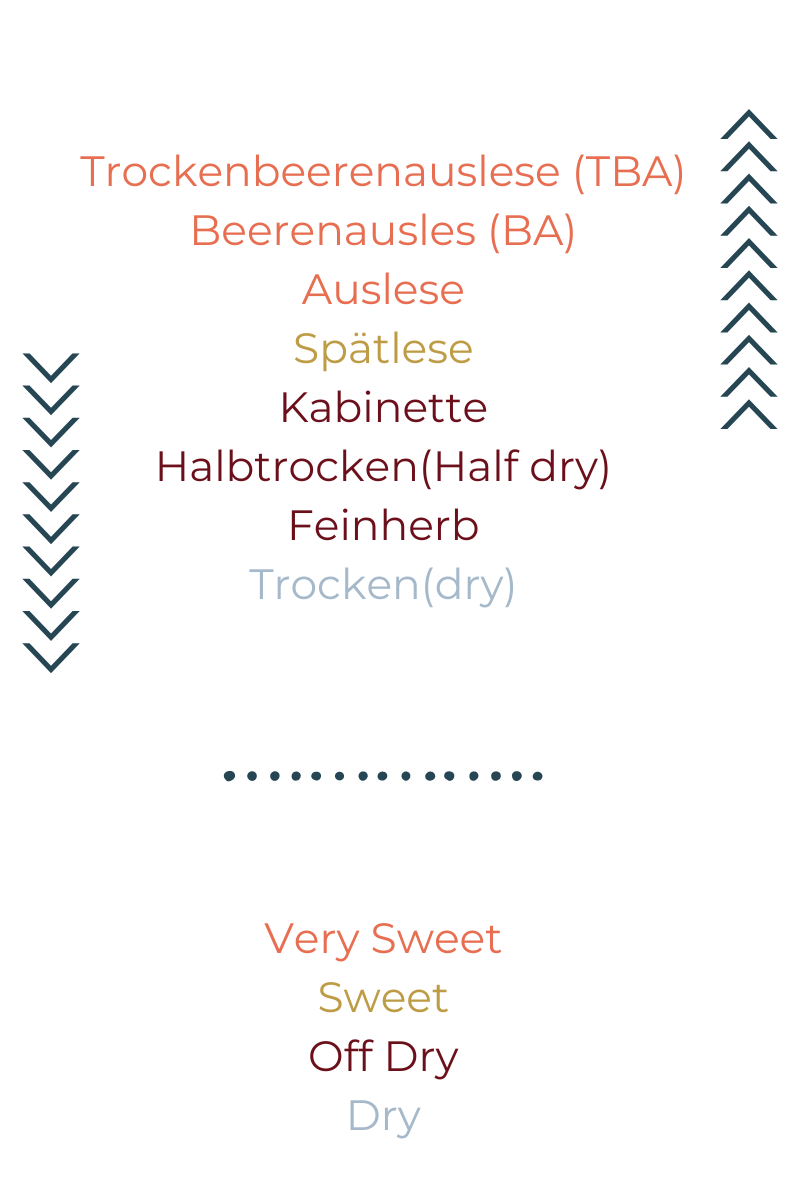A Guide To Understanding the Basics
Mastering white wine varietals is easier than you may think. With so many white wines in existence – hundreds in Italy alone – it can be overwhelming to know where to start.
This article will simplify things, covering the four most well-known white varietals. Beginning with Riesling – one of my favorites, and ending with a classic we all know and love – Chardonnay. I will start with the lightest and end with the fullest bodied varietal. In the end, I hope to empower you to choose your next glass of white wine with confidence.
RIESLING
My One True Love
Riesling is by far my favorite varietals and one I will dive deeper into in later articles. An amazing and dynamic grape. It is one of the lightest and most delicate white grapes.
Riesling often gets a bad rap for being too sweet, but this isn’t necessarily the case. The truth is that Riesling can range from very dry to very sweet, depending on the region and viticultural practices of the winemaker. Don’t be afraid to try it out – some of the best Rieslings are as dry as they come!

Riesling, believed to have originated in the Rheingau region of Germany, will often stay true to its German ancestry when labeled. The attached figure will break down the different classifications of Riesling. Knowing these classifications will make shopping for your style of Riesling much easier.
Generally, Riesling is light in color and body, fruit-driven with high acidity and low alcohol. The winemaker’s practices have a significant impact on its overall flavor, making it a very temperamental grape. More refined versions are found in cooler climates like Germany and Alsace, France. In warmer climates such as California and Washington, it exhibits less minerality and a fuller body.
SAUVIGNON BLANC “Savvy B”
Aromas sent straight from Heaven
Sauvignon Blanc is a white grape that is well-known for its high acidity. It typically tastes of straw, citrus, and green bell pepper, and is highly fragrant. The aromas are so enticing that I have often wished I could bottle them up and turn them into a candle. As with many of the classic varietals, the taste of Sauvignon Blanc will vary depending on region.
In California, Sauvignon Blanc is renowned for its notes of green apple, pear, and peach. French Sancerre’s are recognized for their citrus-driven notes, with a slight minerality. The Most Popular Sauvignon Blanc hails from New Zealand. They lead with distinct flavors and aromas of grapefruit, passionfruit, and straw.
Sauvignon Blanc is known by many names, based on where and how it is grown. For example, in France, it is referred to by region, as Sancerre or Pouilly-Fumé. In the 1970s, Robert Mondavi popularized barrel-age Sauvignon Blanc, commonly referred to as Fumé-Blanc. Regardless of its name, all of these wines are derived from the same grape – Sauvignon Blanc.
As a whole, it’s full of fruit, light in body, and acid-driven. Generally, it is a drier white wine, with medium alcohol, and fragrant aromas.
PINOT GRIS/GRIGIO
The White T-Shirt
Pinot Gris, also referred to as Pinot Grigio in Italy, is a distinctively dry white wine. Karen MacNeil, the author of The Wine Bible, describes it as, “the wine version of a white t-shirt” for its approachability and lack of overpowering elements. It is a refreshing, pure, and generally neutral wine that appeals to almost everyone.
Pinot Grigio from Italy typically has subtle notes of salinity and will be more mineral-driven. French Pinot Gris exhibits notes of citrus with sweeter undertones of peach and honey. One of my favorite regions for Pinot Gris is my home sweet home, the Willamette Valley. Here, Pinot Gris boasts of pear flavors, bright acidity, and subtly herbaceous qualities.
In most cases, Pinot Gris is a dry wine with a light body, noticeable acidity, and medium alcohol. The fruit characteristics are present but not dominant. While some may consider Pinot Gris the basic b*tch of white wine, there’s no denying the pure joy that comes from sipping a chilled glass by the pool in the summertime.
CHARDONNAY
It doesn’t always have to be a butter bomb
Chardonnay has been a staple in dining rooms for decades. It is a full-bodied white wine known for its rich, creamy taste. This unique taste is largely influenced by the winemaker’s use of oak during the aging process. The use of oak can impart flavors such as vanilla, caramel, and butter. Additionally, the buttery taste and texture typically associated with Chardonnay is a result of the winemaker’s decision to undergo malolactic fermentation. In this process, the tart-tasting malic acid is turned into softer lactic acid.
Chardonnay from California often exhibits rich fruit flavors like pineapple and apple. They tend to have a more pronounced oak presence, are full-bodied, and fruit-forward. In contrast, French Chardonnay, particularly from Burgundy, has more refined oak flavors and is mineral-driven. Despite regional differences, Chardonnay wines are typically fruit-driven, full-bodied, with moderate acid, and higher in alcohol.